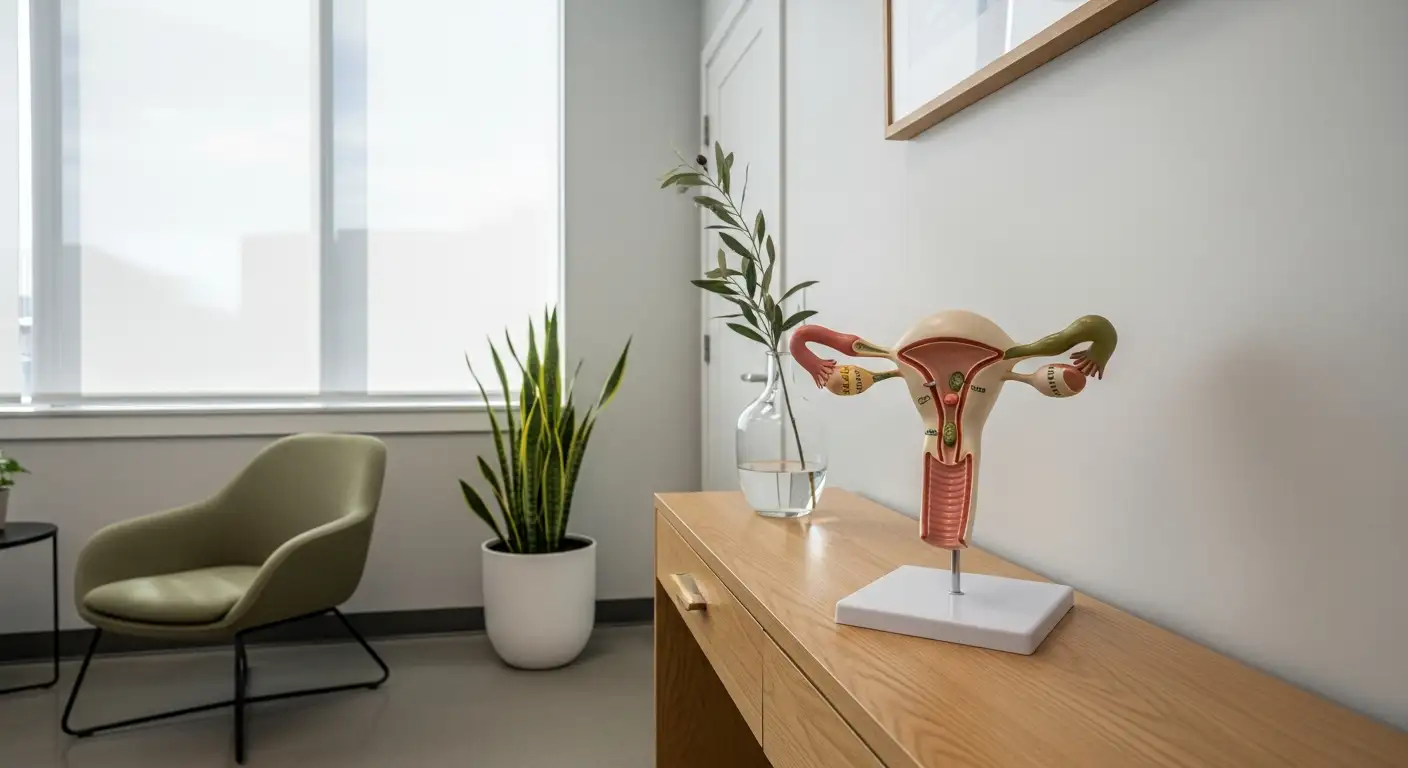Why Serenity Should Be a Part of Your Wellness Routine
Embracing Inner Peace for Holistic Well-Being

Discover the Power of Serenity in Your Daily Life
In the journey toward holistic health, serenity emerges as a vital element that fosters mental clarity, emotional stability, and physical vitality. This article explores the multifaceted benefits of incorporating serenity into wellness routines, highlighting practical practices, therapies, and scientific insights that underscore its importance. From mindfulness and meditation to nature connection and advanced therapies, learn how serenity can transform your health and enrich your life.
Understanding Serenity in Psychology and Its Impact on Health

What is serenity in psychology?
Serenity in psychology refers to a personal and subjective state of inner calm, peace, and untroubled tranquility. It is characterized by feelings of contentment, equanimity, and self-compassion. Unlike traditional psychology’s historical focus on negative behaviors and disorders, modern approaches emphasize nurturing positive mental states that foster this peaceful condition.
Achieving serenity involves embracing acceptance of uncontrollable life aspects, practicing meditation, journaling, engaging in activities that reduce stress, and minimizing emotional reactivity. Many find serenity through mindfulness practices, fostering forgiving attitudes, and connecting with nature.
Research also shows that positive relationships, even with pets, can enhance feelings of peace and mental well-being. Overall, serenity in psychology highlights the importance of internal balance, mindfulness, and acceptance for maintaining mental health and fostering resilience.
How serenity fosters mental and emotional resilience
Experiencing serenity offers a variety of benefits that contribute directly to mental and emotional strength. It reduces chronic stress, which, if left unchecked, can damage mental health and diminish well-being. Serenity encourages individuals to identify activities that bring happiness and to foster resilience by accepting circumstances beyond their control.
Practicing serenity through mindfulness, routines, and holistic practices empowers people to better manage their reactions and emotions. When faced with challenges, a serene mind can evaluate situations calmly, leading to thoughtful decision-making. This stability supports recovery from emotional upheavals and promotes long-term wellness and fulfillment.
By fostering a state of inner peace, serenity enables individuals to navigate daily stresses more effectively, promoting emotional stability and mental clarity. These benefits build a resilient foundation that strengthens mental health overall.
The connection between serenity and psychological well-being
Serenity significantly impacts psychological well-being by promoting inner peace, acceptance, and trust in oneself and the world. Practices like meditation, spiritual reflections such as the Serenity Prayer, and mindfulness help reduce feelings of frustration and hopelessness caused by life's uncertainties.
Cultivating serenity enhances resilience, providing the courage and wisdom needed to take constructive actions while letting go of unnecessary worries. This emotional balance can lower cortisol levels, improve mood, and boost immune health, leading to better physical health.
Furthermore, serenity fosters emotional stability by easing anxiety and depression symptoms, creating space for positive thoughts and feelings. The sense of calm and acceptance gained through serenity improves overall quality of life, enabling individuals to better handle daily challenges and achieve meaningful goals.
| Aspect | Impact | Description |
|---|---|---|
| Mental clarity | Boosts focus and decision-making | Serenity promotes a calm mind conducive to effective thinking |
| Emotional stability | Reduces anxiety and mood swings | Achieving inner peace leads to balanced emotions |
| Physical health | Lowers stress hormones, strengthens immunity | Serenity benefits both mind and body |
| Resilience | Enhances ability to cope | Fosters a mindset prepared to handle stress and adversity |
| Well-being | Promotes fulfillment | Cultivating serenity supports a meaningful and content life |
In summary, serenity acts as a foundational element for sustaining both mental and physical health. Through practices that cultivate inner peace, individuals can improve their overall resilience and quality of life, demonstrating the profound connection between serenity and holistic well-being.
Integrating Serenity into Daily Self-Care Practices

How can serenity be incorporated into self-care and daily routines?
Achieving a sense of serenity involves intentionally weaving calming practices into everyday life. A foundational approach is engaging in mindfulness—paying close, non-judgmental attention to one’s thoughts and feelings. This practice helps create a sense of presence and reduces stress.
Guided meditation and relaxation techniques, such as deep breathing exercises, are also effective. Techniques like the 4-7-8 breathing method—inhaling for four seconds, holding the breath for seven, and exhaling slowly for eight—can quickly calm the nervous system during stressful moments.
Creating serene environments at home further supports tranquility. This can involve decluttering spaces, incorporating soothing decor, or setting up cozy corners dedicated to meditation or reading. Soft lighting, calming colors, and natural elements like plants contribute to a peaceful atmosphere.
Spending time outdoors and connecting with nature has proven benefits. Activities such as walking in parks, gardening, or simply sitting under a tree help lower cortisol levels, reduce anxiety, and foster a sense of well-being. Even indoor natural elements like water features or sunlight can boost mood.
The role of gratitude, setting healthy boundaries, and maintaining balanced routines also play a vital part. Practicing gratitude—focusing on positive aspects of life—promotes contentment and reduces negative emotions. Establishing boundaries with work, technology, and social commitments protects your mental space, making room for serenity.
Maintaining routines that nourish the seven pillars of wellness—physical, mental, emotional, intellectual, spiritual, social, and practical—ensures a holistic approach. Regularly incorporating activities such as gentle exercise, creative pursuits, and social connections keeps life balanced and peaceful.
Strategies for fostering serenity include:
| Practice | Description | Benefits |
|---|---|---|
| Mindfulness | Non-judgmental awareness of present moments | Reduces stress, enhances focus |
| Guided Meditation | Listening to calming voice instructions | Promotes relaxation, mental clarity |
| Deep Breathing | Techniques like 4-7-8 or diaphragmatic breathing | Lowers anxiety, activates relaxation response |
| Creating Serene Spaces | Using decor, lighting,Comforting environments | Encourages calmness and focus |
| Connecting with Nature | Walking, gardening, forest bathing | Decreases inflammation, boosts mood |
| Practicing Gratitude | Journaling, reflections | Fosters positive mindset |
| Setting Boundaries | Limiting work hours, technology use | Protects mental health |
| Balanced Routine | Incorporating wellness activities daily | Supports ongoing serenity |
Additional Tips for Daily Serenity
Start the day with a quiet moment—sitting in stillness or practicing meditation—to set a peaceful tone.
Create a calm workspace by decluttering and adding elements like soft lighting and natural accents.
Use mindful breathing exercises during stressful moments to regain composure.
Engage with nature regularly, even if only through indoor plants or natural light.
Consider integrating calming products like essential oils, or even grounding practices such as walking barefoot in the grass or on natural surfaces.
Incorporating serenity into daily routines is about consistent, intentional practices that nurture the mind, body, and spirit.
By establishing these habits, you promote a sustainable sense of calm that can withstand life’s inevitable stresses. Over time, this holistic approach helps to nurture inner peace, resilience, and overall well-being.
Therapeutic Practices Enhancing Overall Health Through Serenity

What are some serenity therapies and practices that can improve overall health?
Achieving a state of serenity involves engaging in various therapies and practices that nurture the mind, body, and spirit. One of the most accessible methods is mindfulness meditation, which encourages individuals to observe their thoughts and emotions without judgment. This practice enhances self-awareness, reduces stress, and cultivates inner calm.
Physical activities such as yoga, brisk walking, dancing, and other moderate exercises release endorphins—nature’s mood elevators—helping improve emotional well-being. These movements also promote flexibility, strength, and better sleep, all contributing to a balanced state of health.
Relaxation techniques are essential for activating the body's relaxation response. Deep breathing exercises, like the 4-7-8 technique, can quickly help regain calm during stressful moments. Progressive muscle relaxation, which involves tensing and relaxing muscle groups systematically, alleviates tension and eases pain. Aromatherapy, using essential oils like lavender or chamomile, can further enhance tranquility and reduce anxiety.
Spending time in nature is a powerful way to restore emotional balance. Activities such as forest bathing, grounding (barefoot contact with natural surfaces), gardening, or simply sitting outdoors can decrease inflammation and improve mood. Connecting with natural surroundings supports the regulation of emotions and reduces chronic pain and inflammation.
Engaging in reflective and emotional release practices like journaling or forgiveness exercises helps resolve underlying emotional burdens. These activities foster mental resilience, allowing individuals to process feelings and foster growth. Spiritual practices such as prayer, meditation, or reading spiritual texts offer a sense of purpose and acceptance, reinforcing inner peace.
Combining these therapies and practices provides a holistic approach to health, promoting serenity that benefits mental clarity, emotional stability, and physical vitality.
| Practice/Technique | Focus/Benefit | Description |
|---|---|---|
| Mindfulness Meditation | Stress Reduction | Observation of thoughts and feelings without judgment to cultivate awareness and calm |
| Yoga & Movement | Mood & Flexibility | Gentle physical movement that releases endorphins and enhances bodily awareness |
| Deep Breathing Exercises | Anxiety Relief | Techniques like 4-7-8 breathing regulate respiratory patterns and induce relaxation |
| Progressive Muscle Relaxation | Tension Relief | Sequentially tensing and relaxing muscle groups to reduce physical tension |
| Aromatherapy | Emotional Calm | Use of essential oils to soothe the nervous system |
| Spending Time in Nature | Emotional & Physical Balance | Activities outdoors that decrease inflammation and promote mental clarity |
| Journaling & Forgiveness | Emotional Resilience | Writing activities that aid in emotional release and understanding |
| Spiritual Practices | Purpose & Inner Peace | Prayer, meditation, or reflection to foster acceptance and spiritual connection |
Overall, integrating these serene practices into daily routines can lead to sustained improvements in mental, emotional, and physical health, creating a foundation for a peaceful and balanced life.
The Scientific Foundations of Serenity and Its Health Benefits

The physiological effects of serenity on stress hormones
Serenity, or a state of inner calm and peace, has profound effects on our body's stress response. When individuals experience serenity, levels of cortisol, a primary stress hormone, tend to decrease. Elevated cortisol over time can impair immune function, disrupt sleep, and lead to chronic inflammation, increasing the risk of ailments like heart disease and diabetes. Achieving serenity through practices such as meditation, deep breathing exercises, or spending time in nature helps regulate these hormonal responses, fostering better physical health.
The role of relaxation response in health
The relaxation response is a physical state of deep rest that counteracts the stress response. Techniques like progressive muscle relaxation, guided imagery, and aromatherapy activate this response, leading to reduced heart rate, lower blood pressure, and decreased muscle tension. Consciously inducing relaxation can lower levels of stress hormones, enhance immune functions, and improve overall mental and emotional well-being. This physiological shift contributes to a calmer mind and a healthier body.
Research on the impact of serenity therapies
Multiple studies support the benefits of serenity-enhancing therapies. For instance, mindfulness and meditation practices are linked with decreased anxiety, improved emotional resilience, and balanced brain activity in regions responsible for emotion regulation. Steam therapy, involving inhalation of warm vapor, has been shown to boost serotonin levels—nature's mood stabilizer—while lowering cortisol. Additionally, wellness coaching and holistic care models integrate mental and physical health strategies, fostering sustainable lifestyle changes that contribute to long-term serenity.
Red light therapy and its benefits
Red light therapy (also known as photobiomodulation) has gained scientific backing for its positive impact on cellular health. It stimulates mitochondrial function, increasing ATP production, which is essential for cell repair and energy. This therapy can improve skin health by boosting collagen and reducing signs of aging like wrinkles and age spots. It also reduces inflammation and provides pain relief, making it beneficial for chronic conditions such as arthritis or muscle pain. Furthermore, emerging research suggests that red light therapy can elevate mood by reducing oxidative stress and promoting the release of endorphins, supporting mental wellness.
The connection between serenity and immune function
A relaxed state of mind directly benefits immune health. Chronic stress suppresses immune responses by elevating cortisol levels, which impair the activity of immune cells. Conversely, serenity enhances immune function by reducing cortisol and increasing the production of serotonin and endorphins, hormones associated with happiness and immune activation. Spending time in natural environments, practicing mindfulness, or engaging in grounding activities like earthing can help modulate inflammatory responses, improve sleep quality, and strengthen overall resistance against infections.
| Aspect | Effects | Supporting Details |
|---|---|---|
| Stress Hormones | Reduced cortisol | Calmer mind lowers stress response, decreasing inflammation and disease risk |
| Relaxation Response | Improved physical health | Activates parasympathetic nervous system, stabilizing heart rate and blood pressure |
| Serene Therapies | Emotional resilience | Mindfulness, steam inhalation, wellness coaching lead to mental and physical balance |
| Red Light Therapy | Cellular repair | Enhances mitochondrial activity, collagen synthesis, mood elevation |
| Immune Function | Increased resilience | Lower cortisol, higher serotonin, natural environments boost immune activity |
Incorporating Advanced Serenity Therapies for Wellness Enhancement

What are the benefits of red light therapy?
Red light therapy, also known as photobiomodulation, uses low wavelength red or near-infrared light to penetrate deep into the skin and tissues. This therapy stimulates cellular energy production, known as ATP, which enhances tissue repair and overall cellular function. One of its prominent benefits is the improvement of skin health, including increased collagen production that reduces signs of aging such as wrinkles, fine lines, and age spots.
Additionally, red light therapy provides significant pain relief and reduces inflammation, making it popular among athletes and individuals suffering from chronic pain conditions like arthritis. The therapy also boosts circulation and accelerates healing, supporting recovery from injuries.
Research indicates that regular sessions can uplift mood and alleviate symptoms of anxiety and depression, thanks to its calming effects on the nervous system. Typically lasting 10 to 20 minutes, treatments are painless and can be easily integrated into wellness routines, suitable for all ages.
How does steam room therapy contribute to relaxation?
Steam room therapy creates a warm, moist environment that promotes relaxation and stress relief. The heat induces vasodilation, improving blood flow and helping the body detoxify through sweating. This controlled environment nurtures mindfulness and mental calmness, especially when used for meditation or guided relaxation.
The soothing heat also triggers the release of endorphins, natural mood enhancers, and supports the regulation of cortisol levels, the hormone associated with stress. Additionally, steam therapy can help reduce muscular tension, decrease pain, and improve respiratory health.
Regular use of steam rooms can stabilize the central nervous system and foster mental clarity. It’s a simple yet effective way to manage daily stress, elevate mood, and promote a sense of inner peace.
How do nature connection therapies like forest bathing and earthing enhance serenity?
Spending time in natural settings, such as through forest bathing and earthing (barefoot contact with the earth), has proven benefits for emotional and physical health. Forest bathing, or shinrin-yoku, involves immersing oneself in a forest environment, allowing the sights, sounds, and smells to calm the nervous system.
Research from Germany showed that living near forests can influence the amygdala, the part of the brain responsible for emotion regulation, leading to better emotional stability.
Earthing or grounding involves direct contact with the earth surface—walking barefoot on natural terrains or sitting in green spaces. This contact helps balance the body's electrical charge, reduce inflammation, and lower stress hormones like cortisol.
Activities like gardening and barefoot walks can decrease inflammation, improve sleep quality, and promote feelings of happiness and well-being. Regular nature contact supports the body’s natural ability to regulate emotions and manage chronic pain.
How can grounding crystals and sensory exercises support serenity?
Grounding crystals, such as black obsidian, are believed to connect users to earth energies that promote stability and protection. Using these crystals during meditation or placing them in the environment can help reduce emotional upheavals and ground excessive nervous energy.
Sensory awareness exercises involve engaging all five senses—sight, sound, smell, taste, and touch—to anchor oneself in the present moment. This mindfulness technique fosters calmness and reduces mental chatter, helping manage high stress and emotional fluctuations.
Other techniques include diaphragmatic breathing, which enhances relaxation, and baths infused with magnesium and essential oils, which soothe muscles and calm the mind. Combining these practices with grounding tools creates a comprehensive approach to reaching and maintaining serenity.
| Therapy Type | Main Benefits | Suitable For |
|---|---|---|
| Red Light Therapy | Skin rejuvenation, pain relief, mood enhancement | All ages, chronic pain sufferers |
| Steam Room | Detoxification, relaxation, mood upliftment | General wellness, stress management |
| Nature Connection (Forest Bathing & Earthing) | Emotional balance, inflammation reduction | Stress reduction, emotional health |
| Crystals & Sensory Exercises | Grounding, emotional stability, present-moment awareness | Anxiety, high stress |
Integrating these advanced therapies into a wellness routine can significantly enhance overall mental and physical serenity. Their combined effects support a balanced and resilient state of health that aligns body, mind, and spirit.
Making Serenity a Daily Priority for Lasting Wellness
Incorporating serenity into your daily life is not merely a luxury but a fundamental component of holistic wellness. Whether through mindfulness, nature connection, advanced therapies, or simple self-care routines, cultivating inner peace dramatically enhances your mental, emotional, and physical health. Prioritizing serenity nurtures resilience, reduces stress, and promotes a balanced, fulfilled life. Start today—embrace serenity and unlock the profound benefits it offers for your overall well-being.
References
- Serenity and Wellness
- From Stress to Serenity: Self-Care for Total Body Wellness - Fresh Tri
- Ways To Add A Touch Of Serenity To Your Daily Life | Sweet Sensi
- How Health & Wellness Coaching Can Help You Find Peace
- Serenity Now! How Steam Rooms Can Help You Achieve Mindfulness
- Serenity Wellness E15: Emotion Regulators | Insight Timer
- Introducing Serenity Health: Nurturing Mind and Body for Total ...
- Red Light Therapy: An Innovative Approach to Achieving Serenity Now
- What Mental Wellness Really Means - Serenity Mental Health Centers
- Hurricane Wellness Tips To Keep You Healthy & Strong



































































































